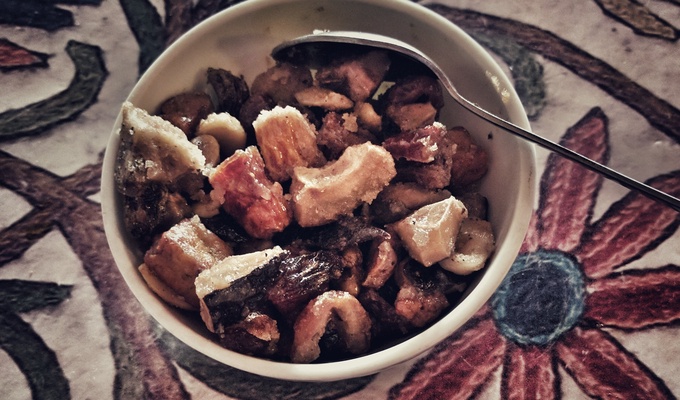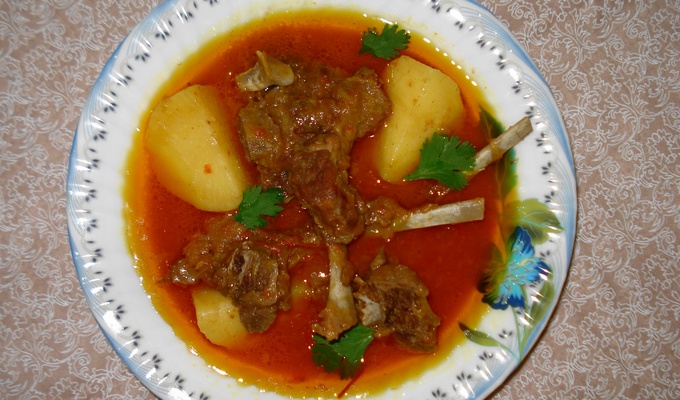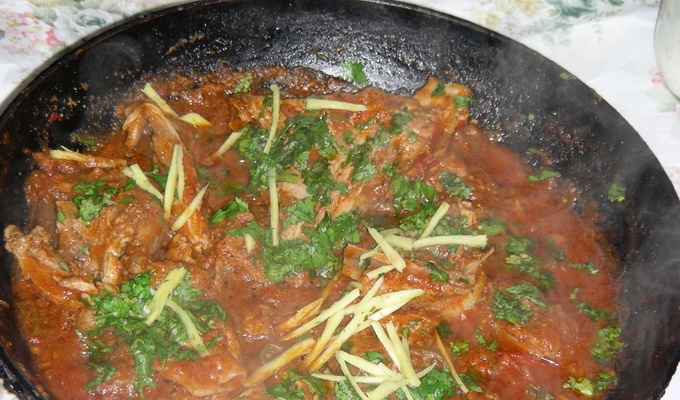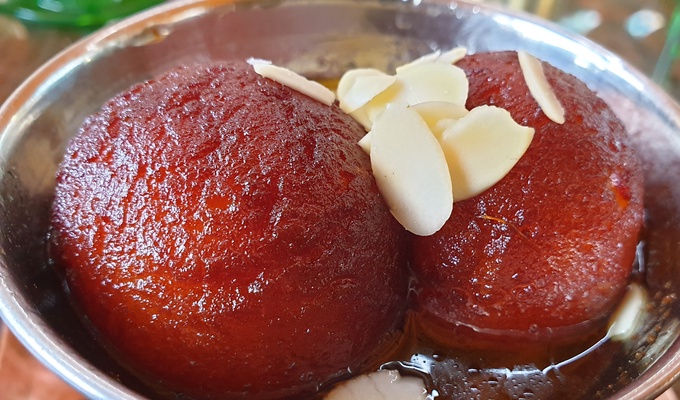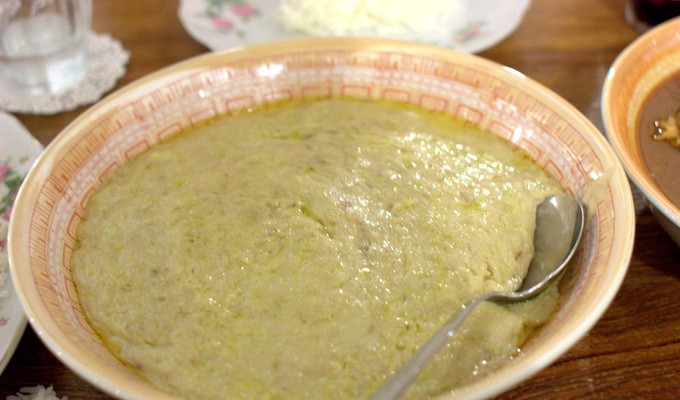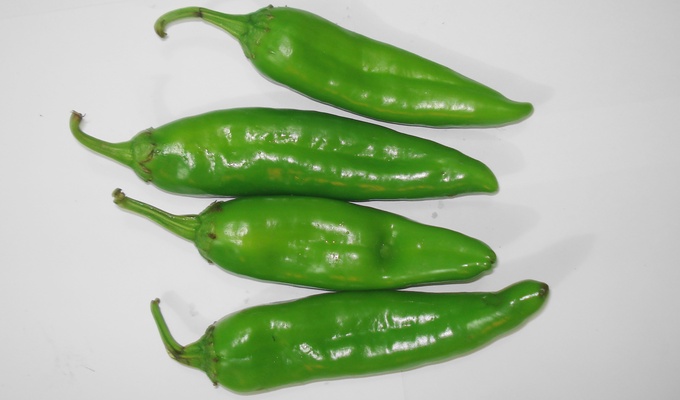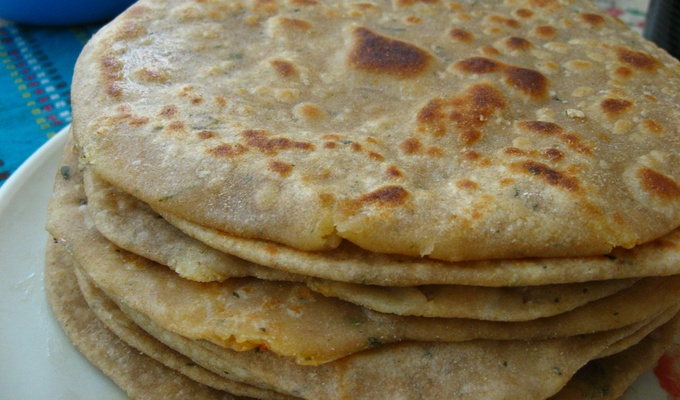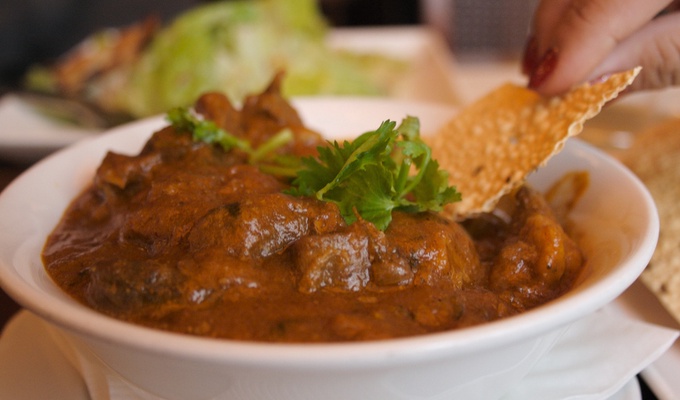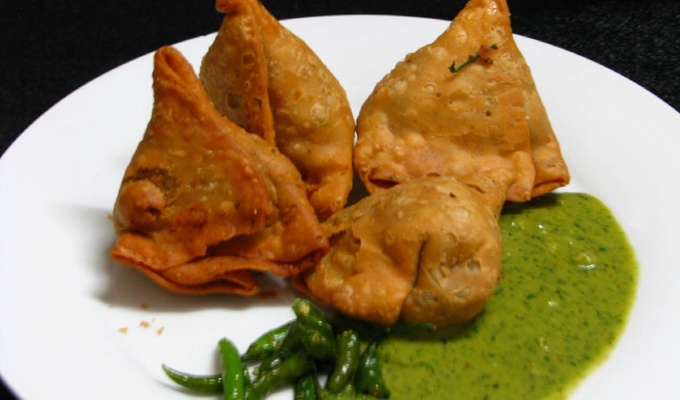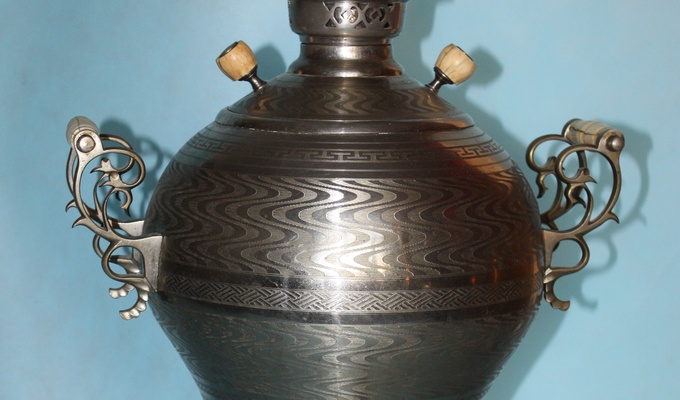Kashmiri cuisine is the cuisine of the Kashmir Valley in the Indian subcontinent. Kashmiris have developed the art of cooking to a very high degree of sophistication and evolved a cuisine quite distinct from that of any part of the world. Rice is their staple food and has been so since ancient times. The equivalent for the phrase bread and butter in Kashmiri is haakh-batta . Meat along with rice, some vegetables and salad are prepared on special occasions like Eid. A typical everyday Kashmiri meal — lunch and dinner — consists of a generous serving of rice, mutton and vegetables cooked in oil, and yoghurt .
Kashmiris consume meat voraciously. Kashmiri cuisine is of two distinct types — wazwan is the food of the Muslims, and the Pandits have their traditional batta. They share a love for lamb; the love a Kashmiri has for meat is unparalled. They are, per capita, the highest mutton consumers in the subcontinent. According to official data, around 2.2 million sheep are slaughtered in Kashmir every year on an average adding up to 21,000 tonnes annual meat consumption in the region. Despite being Brahmin, most Kashmiri Pandits are meat eaters. The amount of mutton that is required to be bought for a Kashmiri Pandit wedding feast is 650 gm per head (not considering chicken). Kashmiri Muslims prefer goat, especially young, while Kashmiri Pandits choose lamb. Meat is called Neni by Pandits and Maaz by Muslims in Kashmir. In a majority of Kashmiri Pandit and Muslim cooking, bread is not part of the meal; it's always rice at lunch or dinner. Bread is only eaten with tea in the morning or evening.
The main daily staple food of the Muslims of Kashmir is plain cooked rice. They are typically not vegetarian, with very few exceptions. Meat stock is a salient ingredient even for so-called 'vegetarian' dishes. A joke shared is: Find me a Kashmiri vegetarian and I will give you a pot of gold. However they often eat vegetable curries, with meat being an expensive indulgence. The cooking methods of vegetables, mutton, homemade cheese (paneer), and legumes are somewhat similar to those of Kashmiri Pandits, except in the use of onions, garlic and shallots by Muslims in place of asafoetida.
In Muslim cuisine, spices are less used as compared to that in Pandit dishes. Cockscomb flower, called "moaval" in Kashmiri, is boiled to prepare a red food colouring, as used in certain dishes. Pandits use the mildly pungent Kashmiri red chili powder as a spice, as well as to impart colour to certain dishes. Muslims use chilies in moderate quantity, and avoid hot dishes at large meals.
There is also a notable difference in the mode of service and eating between Pandits and Muslims, especially in the case of feasts. Amongst Muslims usually four persons eat together, in one big tinned copper platter, called a "traem" in Kashmiri; this is a round vessel of around 45 centimetres (18 in) diameter, typically beautifully embossed.
